Motoring heritage: All hype or living history?
- Published
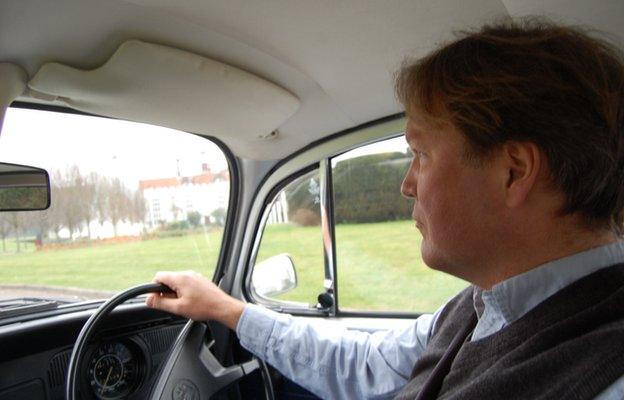
Driving an old Beetle feels like a journey back in time, to an era before technology came to dominate lives
The slim but large steering wheel, the basic switches and buttons and the ample headroom make the old VW Beetle a joy to drive.
Pootling around the Chiltern hills and the Thames Valley, through affluent chocolate-box towns such as Marlow and Henley, makes the experience even more special.
Like the genteel facades of the houses in these quaint riverside market towns, the car brings forth memories of a past when the pace of life was more relaxed, of a time before technology became such a dominant force in our lives.
It is an illusion, of course. One that is shattered the moment you enter any of the buildings, which are brimming with surround-sound audio equipment, computer-controlled appliances and bundles of portable electronic gadgets.
Promotional role
Much the same can be said about Volkswagen's latest attempt at recreating its iconic car.
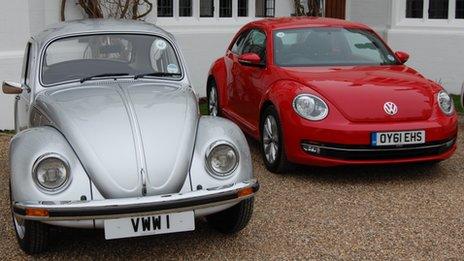
There is a family resemblance between the basic old and the dolled-up new Beetle, yet spiritually they have little in common
The new one is still unmistakably a Beetle - though from certain angles, it bears a closer resemblance to upmarket models, such as a Porsche or the Audi TT, than it does to its former self.
This is true even in terms of its performance and handling, though it is perhaps the interior that has travelled the furthest from the Beetle's humble origins.
Like the houses in this part of the world, the inside of the new model has gone all hi-tech, sprinkled with luxury, complete with a discreet whiff of cash.
The biggest change in the Beetle's personality came after it was promoted to a more desirable job.
These days, the model's task is to massage egos, to flatter the fashion conscious, and to bolster the image of the VW brand.
Humble values
The Beetle's latest promotion - from its first job as a people's car, built to transport the cost-conscious masses - has created a vacancy for Volkswagen's latest basic model; the Up.
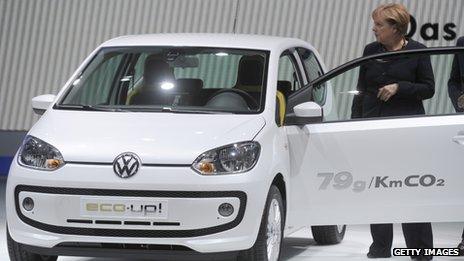
The Up, inspected here by German Chancellor Angela Merkel, could be seen as a spiritual successor to the Beetle
Much of the tiny car's appeal lies precisely in the lack of intricate gadgets.
The Up is true to the values of the Volkswagen brand in a way the Beetle is not - just as other retro-models, such as BMW's Mini or Fiat's 500, are blatantly far removed from the ideals promoted by their 1960s' predecessors.
The basic Up comes with manual wind-up windows rather than air conditioning, and thus a much reduced price tag.
It is expected to sell in vast numbers and should eventually establish itself as a practical tool for solving pragmatic motoring needs.
From design to commitment
As such, the Up reflects a new view of heritage within the motor industry - one where carmakers no longer look to design alone to reflect their past, but instead focus on fresher ways to reflect the ideas behind their earlier models.
Take Jaguar. The carmaker was long wedded to designs that visually reflected its most successful heritage models, such as its C-, D- and E-types.
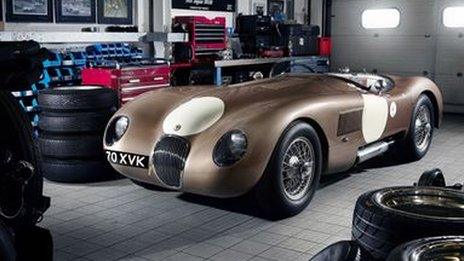
Heritage is a mythical creation, a mixture between history and hype
These days, the luxury marque's designers are instead seeking ways to showcase its ability to operate at the cutting edge of innovation.
Highlighting Jaguar's commitment to technology and engineering is more important in terms of brand building than any effort to recreate the past can ever be.
So the carmaker is showing off vintage models that were once among the most advanced cars on the road, in an effort to anchor this commitment to history; to impress upon drivers that it has been committed for a long time.
Jaguar takes this heritage concept so seriously that it has formalised it as a well-funded, global communications programme, based around a hugely expensive return to historic motor racing in the months ahead.
Barriers to entry
The idea that automotive heritage helps sell cars has broad currency amongst carmakers - especially with those that have been around for a while.
Bentley takes pride in its racing history. Ford is proud of having introduced the moving assembly line to the motor industry. Mercedes likes its three-pointed star to be associated with the very first automobile, patented in 1886 by Carl Benz. Volvo points to how it was quick to introduce safety measures such as seat belts and air bags.
And so on.
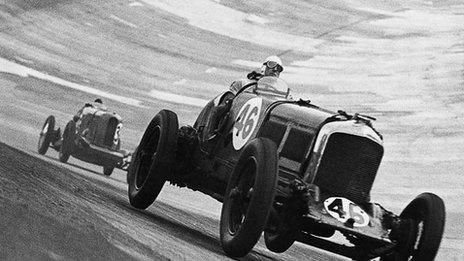
In heritage language, past achievements hint at future success
Tales of past achievements create expectations about future performance, so heritage builds loyalty among existing customers, while also making the marque desirable to new ones.
Heritage is important even in new and emerging markets, where customers are won over by the implicit endorsement by leading brands' customers, going back decades.
In more mature markets, dominated by established brands, it goes a long way to explain why it is so difficult for newcomers to enter.
Indeed, the ability to create high barriers to market entry is perhaps the most important attribute of the illusive heritage concept.
Unlike automotive engineering or marketing programmes, heritage reflects a process that cannot be rushed. You simply cannot build a brand's history overnight.
But heritage can nevertheless be seen as a manufactured product, cobbled together from ingredients such as history and hindsight, knocked into shape with the help of colourful, oft nostalgic, anecdotes and selective interpretations.
At the end of such a process, a powerful marketing tool will have emerged. Many see it as just as important for a marque's success as the technology and engineering that goes into the cars themselves.